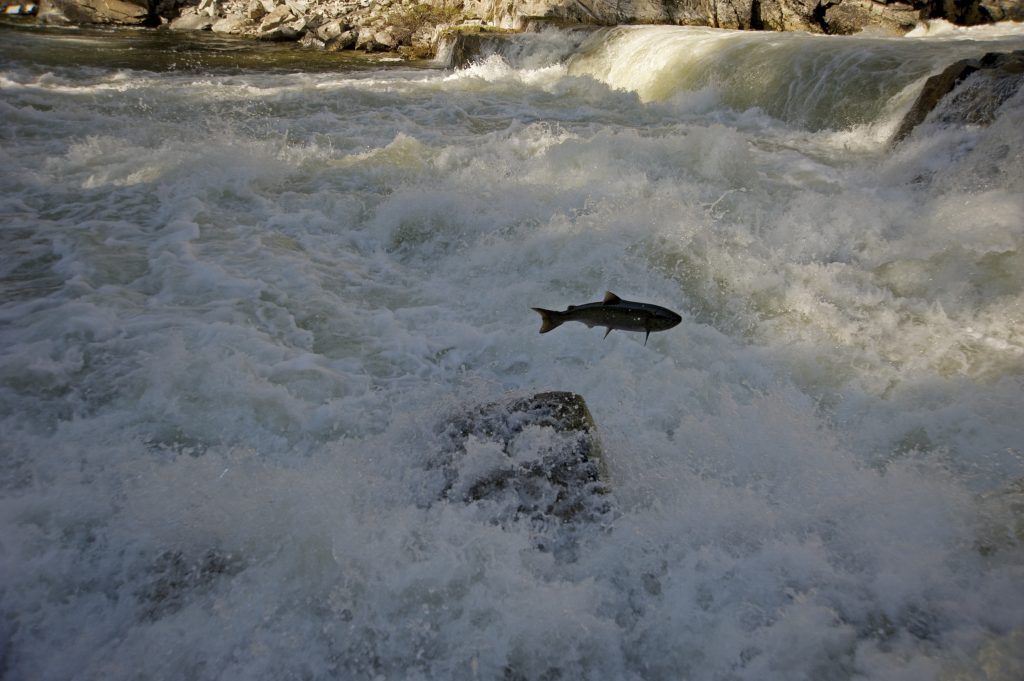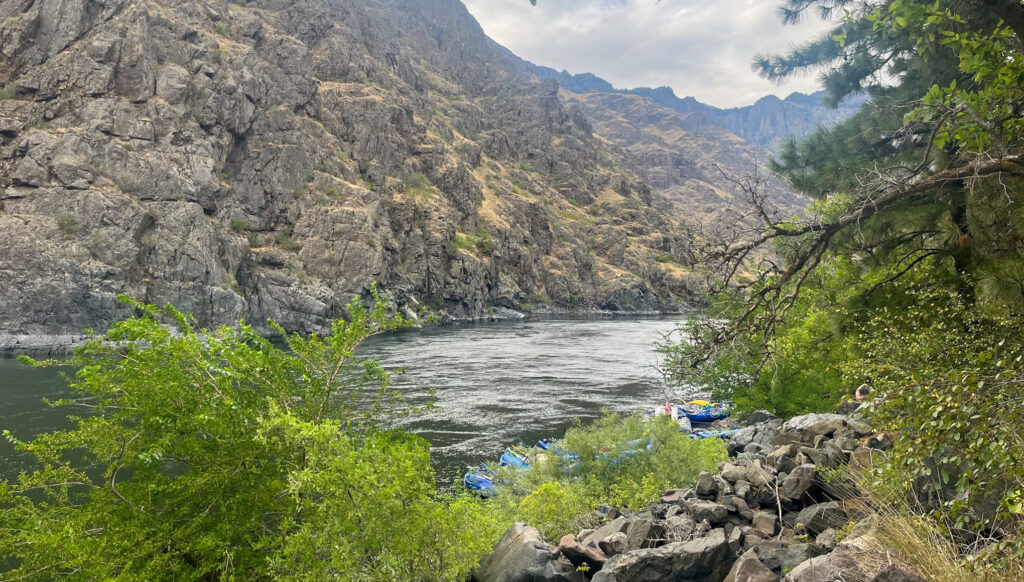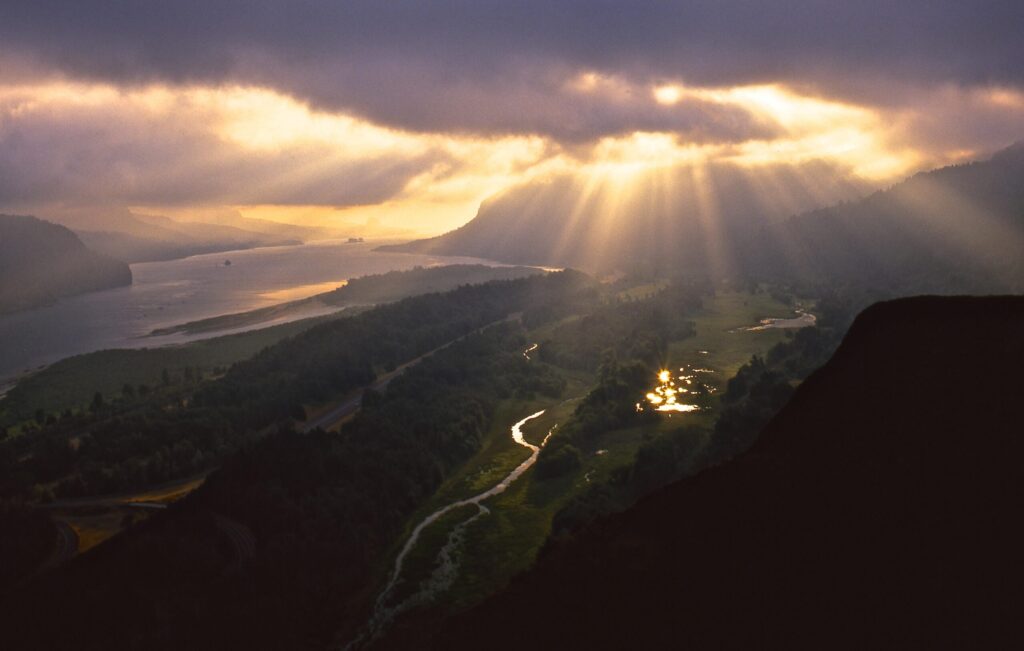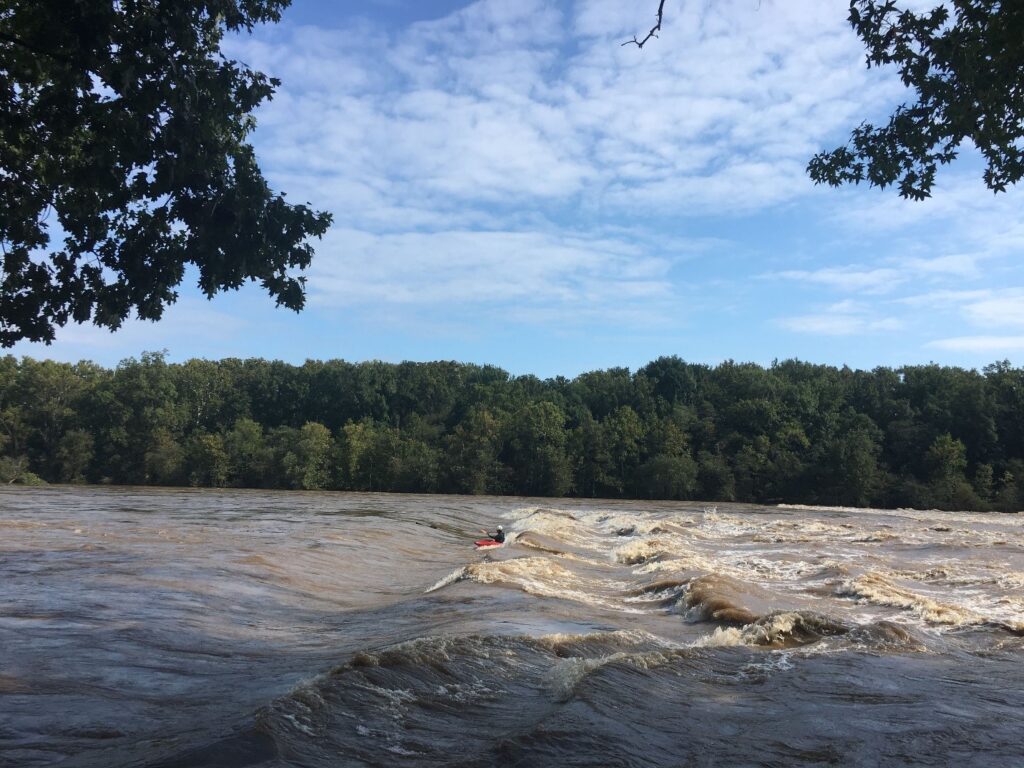Snake River Vision: Energy Replacement
At American Rivers, we believe that any plan to remove the four lower Snake River dams must include an equitable and robust economic transition plan for affected communities. A key component of our regional dialogue must include the feasibility of replacing the dams’ services with alternative methods of transportation, energy, and water delivery.
Hydropower and salmon in the Pacific Northwest have had a long, if not occasionally rocky, relationship. The argument over the four lower Snake River dams and salmon recovery seems to be the one that’s always still there the next morning.
There are currently 31 federal hydroelectric dam projects in the Columbia River Basin. Together these 31 dams make up the Federal Columbia River Power System (FCRPS). The Bonneville Power Administration, the agency created to market and transmit power generated by the FCRPS, says hydropower generates about half of the Northwest’s energy.

The four federal dams on the lower Snake River in eastern Washington—Ice Harbor, Lower Monumental, Little Goose and Lower Granite—are part of the FCRPS. For decades, Tribes, conservationists, sportsmen and others have argued the lower Snake River dams pose too great a risk for the long-term survival of Snake River salmon and steelhead. Others have argued the dams are too important to consider removal. Numbers vary annually, but on average these four dams supply about 4 percent of the Northwest’s electricity supply (approx. 1000 average megawatts, or aMW).
Any argument that starts with “all dams are bad” isn’t any more defensible than one that starts with “all dams are good.” Federal dams, like any public infrastructure, should be evaluated based on their overall benefit against overall costs over time. Numbers being numbers, there are obviously disparities among Northwesterners between what constitutes value and what constitutes cost. The best we can do in evaluating the lower Snake River dams is to compare cost and value as we see them using the best available information.
Likewise, any argument that says “replacing the 1000aMW from the lower Snake River dams is no big deal” isn’t a serious one. The argument that says “we can do it, affordably, with clean and renewable electricity we have now,” however, is. In the last 20 years, more than 2,500 aMW from wind, solar, geothermal and biomass has come online in the Northwest, with another 1,500 aMW under construction. A 2018 study shows that a balanced portfolio of clean, renewable energy can place the power produced at the four dams without a loss in the system’s reliability. What’s more, ever-increasing energy efficiencies and conservation are reducing demand significantly. Different analyses have the cost of replacing the electricity production of the lower Snake dams with clean renewables would cost ratepayers on average about an additional dollar a month. Many argue that such an approach is an opportunity to modernize the grid in the Pacific Northwest and create new jobs and growing tax bases across the region.
Operational costs at the four lower Snake dams, built between 1955 and 1975, are hard to estimate. The US Army Corps of Engineers, which operates the dams, announced a $58 million project in 2016 to upgrade two of the six turbines at Ice Harbor, acknowledging that the dam’s 1961-vintage turbines are about worn out. These are aging dams and like any other infrastructure, are not expected to last forever. They are at the point where they need significant investments to maintain them. Over the past 30 years the federal government and Northwest ratepayers have made massive investments in salmon recovery in the Columbia-Snake Basin totaling more than $17 billion, and the costs of ongoing efforts to get and keep operations at the aging dams in compliance with statutes like the Clean Water Act and Endangered Species Act continue to rise.
At American Rivers, we believe that any plan to remove the four lower Snake River dams must include an equitable and robust economic transition plan for affected communities. A key component of our regional dialogue must include the feasibility of replacing the dams’ services with alternative methods of transportation, energy, and water delivery.
Studies show that power from the lower Snake dams can be replaced by new renewable resources like wind and solar with little or no increase in rates or greenhouse gas emissions. Given green energy mandates in the region and the early retirement of coal plants, developing an energy transition plan that supports reliable and low cost energy and that is also equitable is needed. Developing wind and solar replacements for the dams on the lower Snake River will provide jobs, as well as increased reliability and flexibility for the Pacific Northwest energy system.



4 responses to “Snake River Vision: Energy Replacement”
Hydro electric power is the best source of clean generation of electricity. Solar and wind is expensive and unreliable sources. Perhaps reducing populaion of sea lions will increase population of salmon in more reasonable for peoples way.
average megawatts are not the issue
They’re three gigawatts (total) when fully running, presumably during spring melt.
Unfortunately, wind power needs other sources to balance demand / load to keep the grid stable. Dams and nat. gas are the main ways this is done since they can be throttled up and down very easily (especially dams). Coal and nukes are good base load (unless the nuke has an unplanned outage / accident) but are hard to throttle up and down. I’ve personally used solar PV since 1990, it’s great but more on June 21 than December 21. I wish the NGOs dared suggest that people should use less electricity (and less of everything). Peak Electricity in the US (in terms of generation) was 2018. The largest energy source on the western grid (and also the eastern grid and Texas grid) is natural gas, which is now mostly fracked gas because the conventional gas is running out. http://www.peakchoice.org
Yes, there are other dams in Idaho to contemplate. But why replace turbines on Snake River Dams when the dams’ benefits are offset by operating costs and environmental damage to our fisheries? There are 24 turbines in the 4 Lower Snake River and its time to recognize their obsolescense Thank you for the article Wendy.
This conversation seems to always avoid facts about Idaho’s decades long programs to eradicate the very Salmon runs they now are trying to rebuild. Poisoning these runs in the Sawtooth/Salmon River region for decades is well documented. The more important story though is why does Idaho conveniently avoid facts about the 3 dams in the Hells Canyon Complex completely blocking historically important salmon habitat in the upper Snake River reaches. Why are these 3 dams not in the removal conversation?